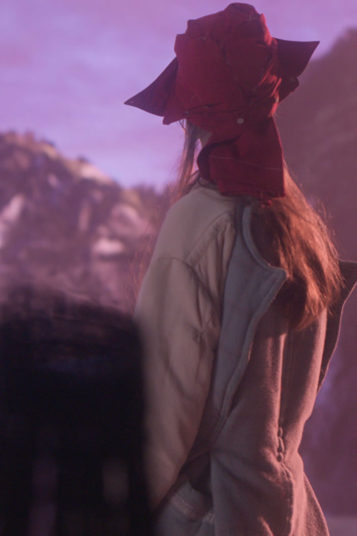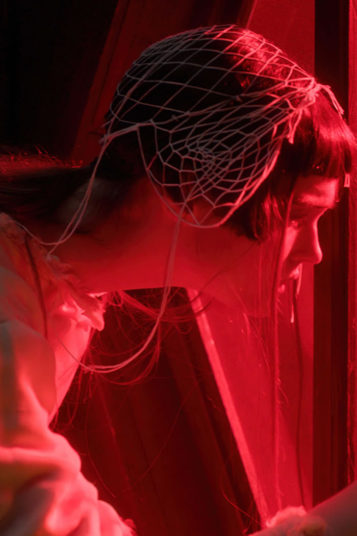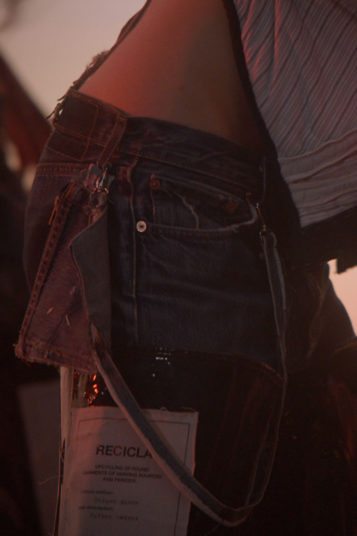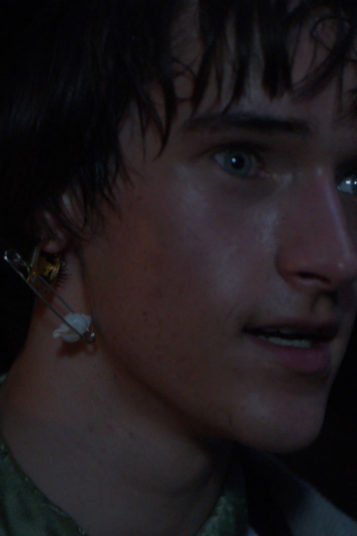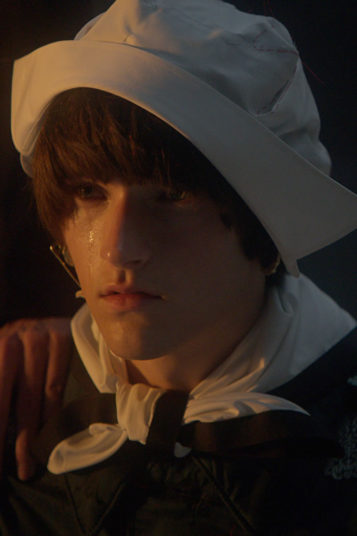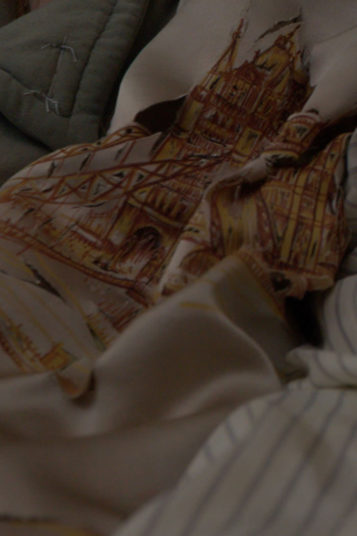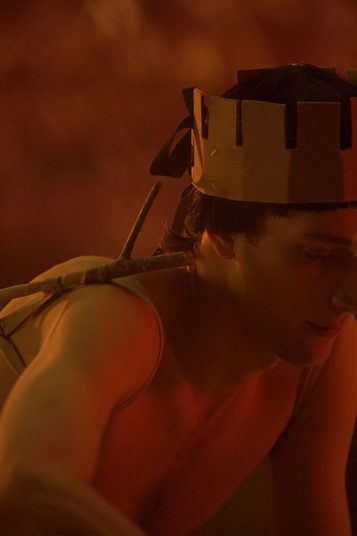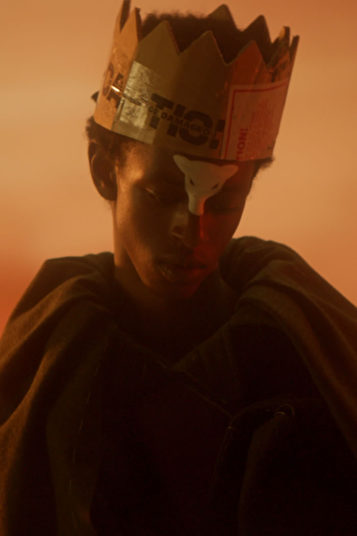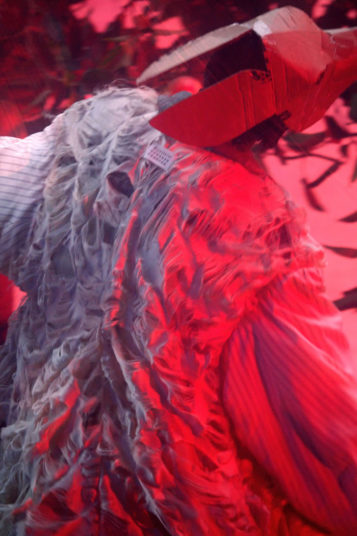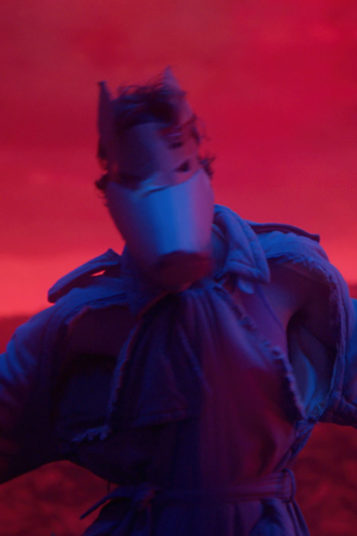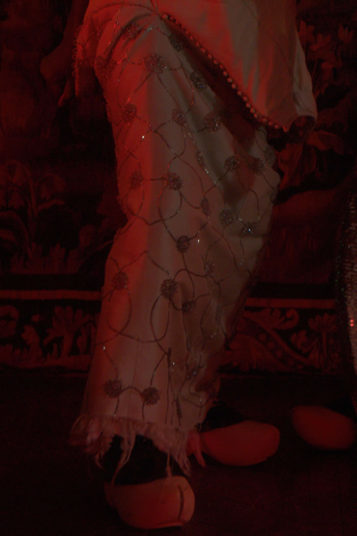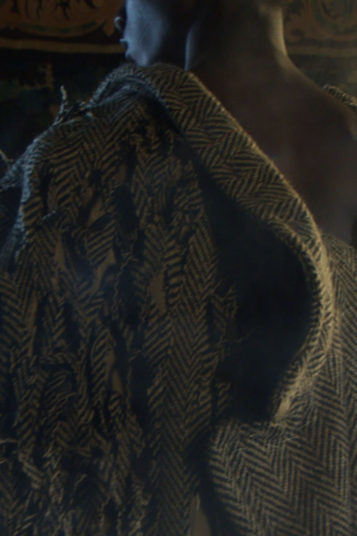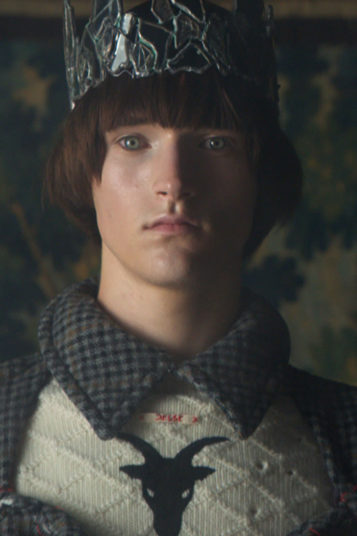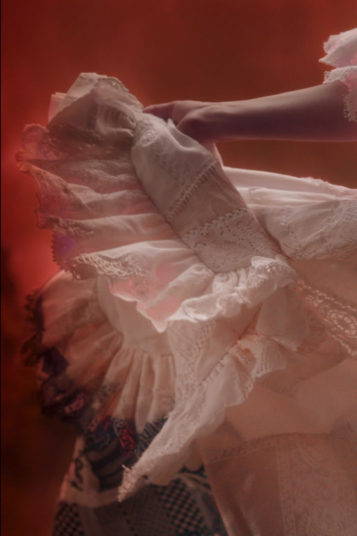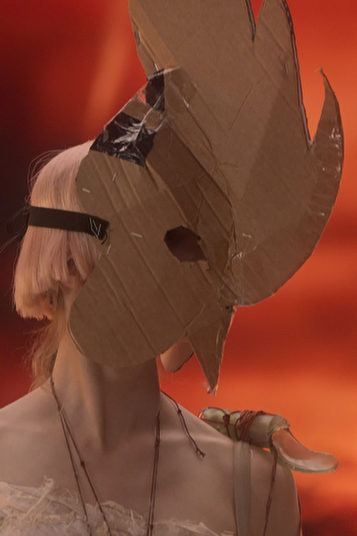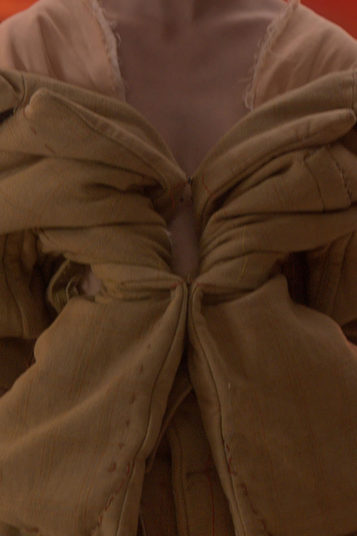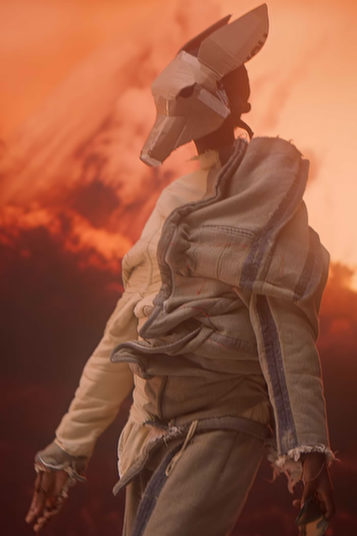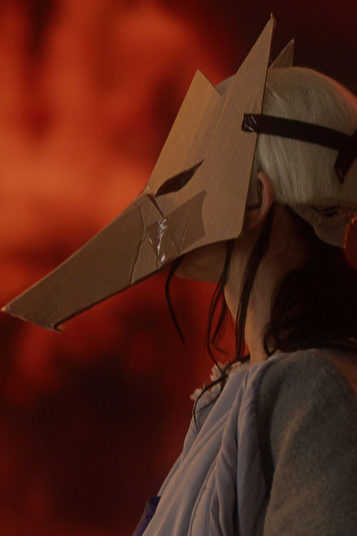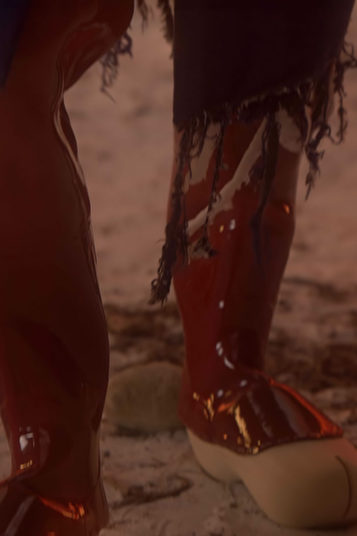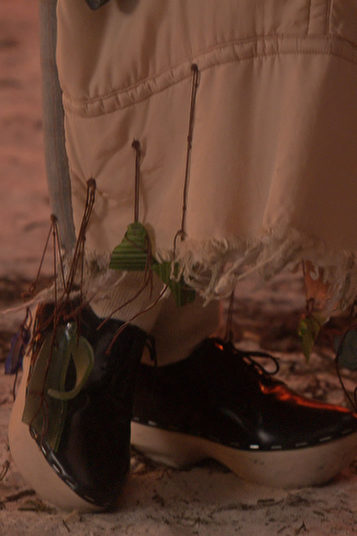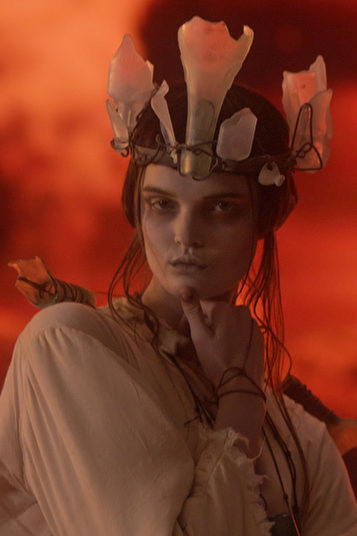The comment seemed emblematic. A romantic, mysteriously troubling struggle with the elements was on Galliano’s mind as he designed and crafted clothes and moving pictures with the French Oscar-winning director-producer Olivier Dahan.
“The effect of the weather, the sea, the moon, the elements, started to play on my psychology.”
Galliano has been a storyteller, a stream-of-consciousness creator since his very beginnings as a student who made his first historically-inspired French Revolution collection, Les Incroyables, in 1984.
Images and self-imagined characters who connect the past with the present have stimulated and preoccupied him for his entire career. In 2021, finally, he’s seized the opportunity to bring those ideas alive through a medium that reaches far beyond the limitations of the catwalk formula.
Even the lookbook of his collection breaks with standard conventions. Every shot on this page is a glimpse of a moving image; each one a teaser drawing his audience into the web of his narrative.
But we’re here to elucidate what’s going on with his clothes. In what is probably the most personal of all the collections he has done for the hand-made Artisanal line—the house equivalent of haute couture—it’s a triumph of emotionally-driven material experimentation.
He said it “came out of hours and hours of dialogue” in his studio, giving form to the conversations with the young group of house models—his ‘Muses’—who take part in his process of making clothes on their bodies; and who eventually act out their meaning. “They’re our community, almost like silent screen actors of the golden years. The clothes are their script.”
That’s how he reached into a gothic, time-traveling manifestation of weather-beaten, tattered, ancient-looking clothes set around the idea of an isolated community of fisher-people battling for survival against the sea.
His first historical reference point was early photographs of Dutch fishermen—the specific traditional lines of their tiny jackets, voluminous trousers, Guernsey sweaters, and wooden clogs.
Another, the legend of King Canute, whose people forced him to command the tide to retreat, and who surrendered them his crown when he failed; saying that only God is in charge. A smashed-mirror crown played a recurring part, found and refound in scenes conjuring a sinister medieval ritual playing over centuries.
The idea of people living at the mercy of uncontrollable forces tuned into the conversations he’d been having with the young people in his studio: “Talking about mental health issues, trans issues around the table with my muses, listening to some of them describe how they were feeling and acting,” during the troubles of lockdown. He has empathy for them.
“I don’t profess to be a therapist, but I’ve done some hardcore rehab myself, and I recognize myself and a lot of what they’re saying or doing. And all I was saying was, you know, the best thing is to talk about it.” As an older and wiser person, he said, “there was a privilege and a joy in sharing.”
As he put it in his introduction to the film, “it’s about the fast-wash of anxiety, the power of nature—and when faced with that, how helpless we are.” That idea took literal form in the way he processed his fabrics, treating them with enzyme washes and stone-washing to remove color; shrinking and wringing them out in a technique he calls “Essorage.”
In many ways, his methodology appears to be the complete opposite of the traditional formalities of haute couture, but represents his break away into an equally intense study of how clothing can be transformed from vintage and found materials in the modern world.
He described how garments were graded up six or 12 times, and then shrunk to fit. How linings of skirts and suits were turned inside out and converted into dresses.
How he attacked denim jackets and loden coats and a 19th-century woman’s corset jacket, unpicking and revealing their original colors in the seams when the washing and wringing were done.
There was a beautiful sweeping blue-and-white patchworked coat made from chopped-up charity-shop finds. Delft tile patterns were crocheted together in a sweater. The artist Celia Pym darned a blue Guernsey with newspaper reports of the death of King George V.
Galliano is always pushing for progress, experimentation. Nevertheless, with their little cotton Netherlandish hats and kerchiefs, their tabi-clog waders, and their romantic, shredded piratical looks, the Margiela Muses looked more purely Galliano than they have done for many a year.
“The narrative of the story is make-believe,” he said, “which is always what I want with a collection, anyway.” With so much at his fingertips—big movie production and all—it’s almost as if John Galliano has gone back to rediscover the primal power of who he always was from the beginning.

